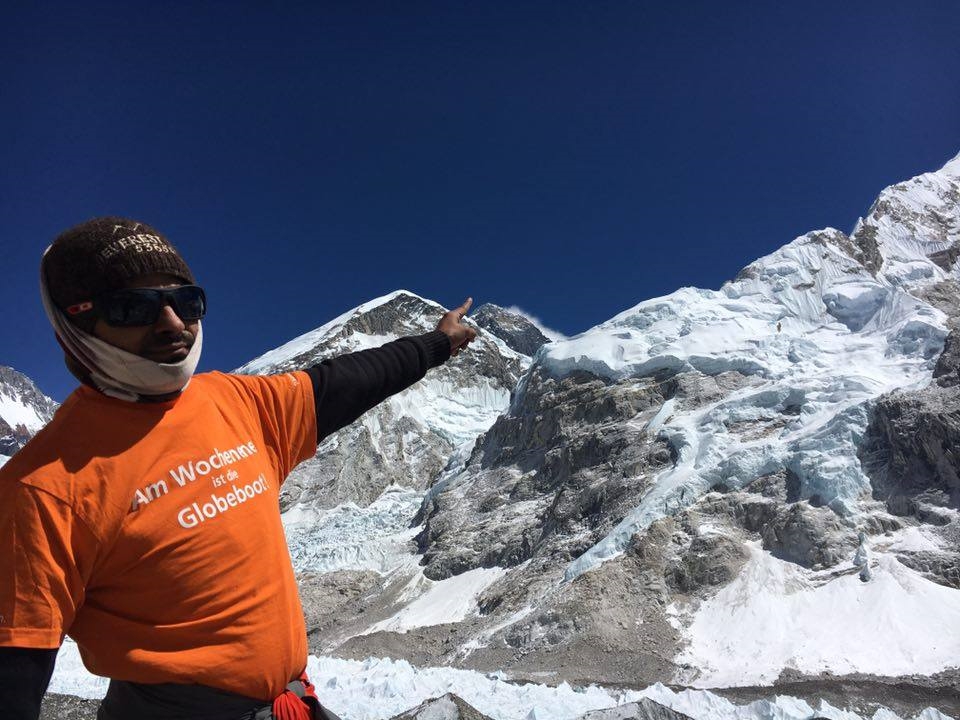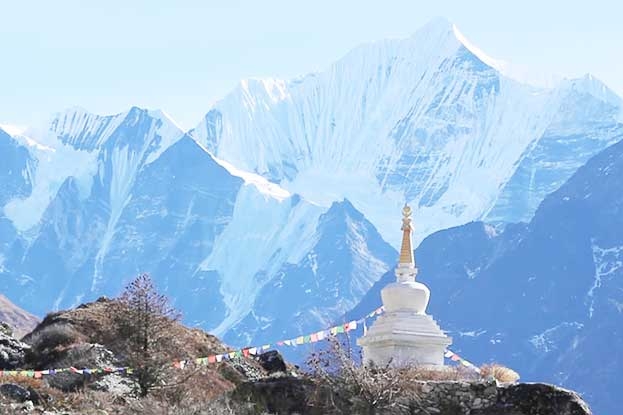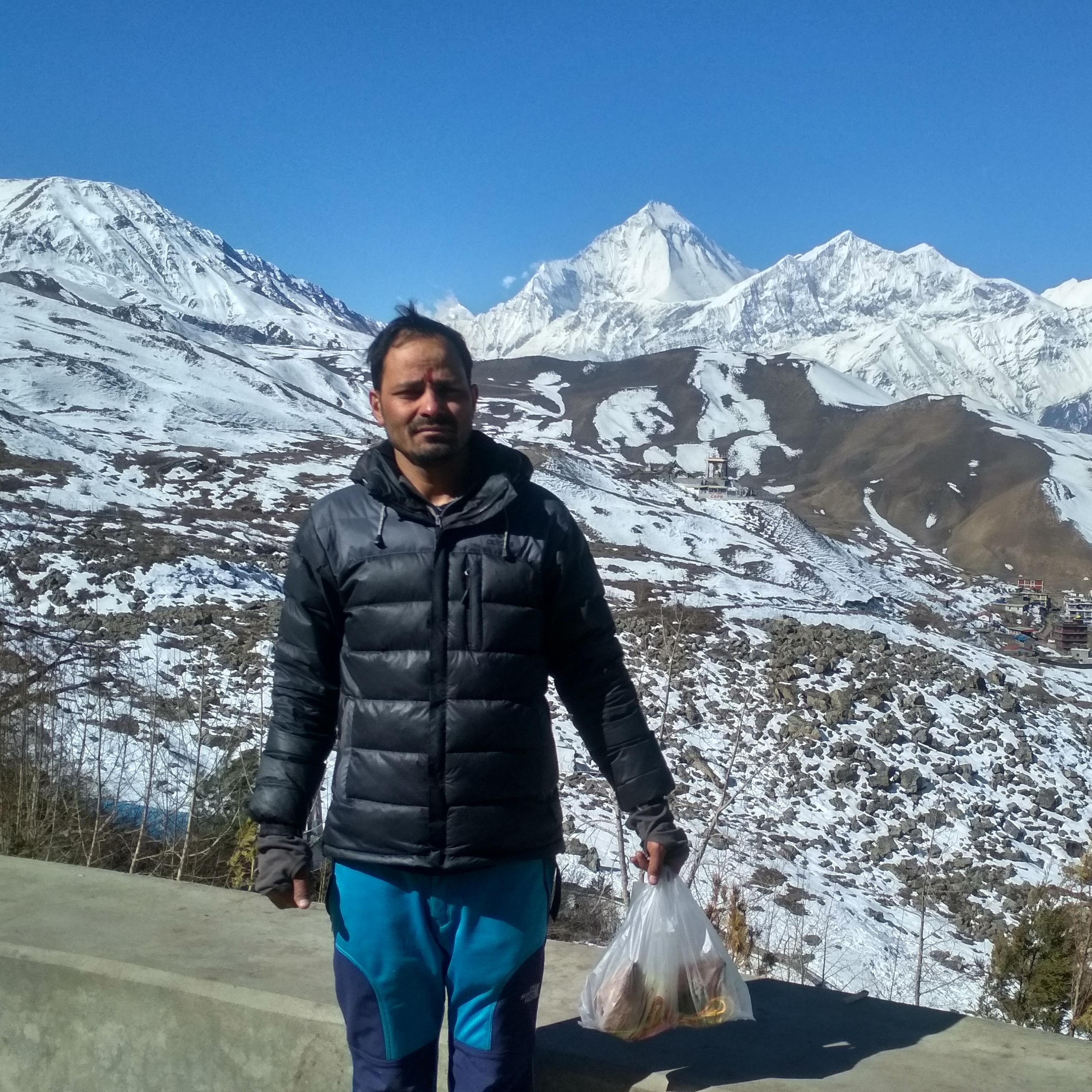Langtang Valley with Tamang Heritage Trek
Langtang Valley with Tamang Heritage Trek Highlights
- Tatopani's natural hot springs.
- Discover well-known historic gompas and monasteries in Kyanjin, and take a hike to viewpoints offering expansive mountain views.
- Take in the breathtaking views of Ganaesh Himal (7422 m), Langtang Luring (7227 m), and other peaks.
- Visit Kyanjin Gompa and sample Yak's cheese and curd.
- Discover the Buddhist culture and practices while participating in the religious rites.
- Langtang National Park and the Langtang Glacier.
- Wide range of rhododendron, birds, and animals, as well as diverse flora and fauna.
- Study the languages, customs, and way of life of the Tamang people.
- Go to tamang villages, talk to the people there, and receive friendly greetings.
Langtang Valley with Tamang Heritage Trek is a moderately difficult trekking route in the Langtang region that combines the stunning scenery of the valley with the rich cultural and traditional traditions of the Tamang people. This hike is appropriate for both novice and expert hikers.
Trekking routes and a natural setting can be found in the Himalayan valley of Langtang Valley, located in the north-central Nepalese mountains. The Langtang National Park includes the Langtang Valley. Red pandas, Himalayan black bears, snow leopards, wild dogs, ghoral, serow, and over 250 different species of birds are just a few of the park’s well-known inhabitants. Similar to this, there are many different climatic zones in the park, ranging from subtropical to alpine. There is about 25% forest in the park. Among the trees are maple, deciduous oak, and evergreens like pine and rhododendron. You might come across musk deer, Himalayan red pandas, langur monkeys, as well as a variety of butterflies and birds, while hiking the trail.
Situated between the two towering peaks of Langtang (3500 m) and Ganesh Himal (7429 m), the tamang heritage is a well-liked tourist destination in the Langtang region. The trek passes through terraced fields, lush forests, snow-capped mountains, pastureland, and culturally diverse Tamang villages. It also showcases the distinctive traditional way of life, traditions, and building styles of the Tamang people. Several hundred years ago, the Tamang people arrived in Nepal’s hilly regions as horse traders from Tibet. They have managed to preserve both their unique language and unique identity, rooted in Tibetan culture. The majority of Tamang people—roughly 90% of them—practice Buddhism. As a result, you will see vibrantly printed Buddhist mantra fabrics displayed in a variety of towns and villages.
Permits required for Langtang valley Tamang Heritage
A TIMS (Trekker’s Information Management System) card and an entry permit for Langtang National Park are required in order to trek in the Langtang region, including the Langtang Tamang Heritage Trek. These permits are available at the national park entrance or through authorized trekking agencies in Kathmandu or Pokhara.
Travel Insurance
Travel insurance is required for any trek in Nepal, including the tamang heritage trekking in the Langtang valley. Make sure your travel insurance includes coverage for unexpected emergencies and high-altitude trekking when purchasing it. You can also get the extra coverage for other sports and activities like mountaineering, hiking, and adventure sports. In the case of an unplanned accident, it can provide you with financial security and peace of mind.
Altitude Sickness
Altitude sickness typically happens when you ascend to a high altitude too quickly. At high altitudes, your body tries to adapt to the lower oxygen levels and lower air pressure, which can cause symptoms like fatigue, headaches, and nausea. Be proactive in such a situation and notify your friends or guide right away.
Guide and Porter
To ensure safety and get the most out of your trekking experience, all hikers must hire a licensed trekking guide or sign up with a trekking agency. Crucially, Nepal Holiday Treks and Tours Pvt. Ltd. is a trustworthy business that can offer you a technically proficient guide and porter along with accidental and medical insurance for their protection. They are always given first aid kits, necessary safety gear, and equipment to help prevent common emergencies.
Foods and Lodging
Nepalese Dal Bhat is a popular dish made with fresh green vegetable curry that is organic and healthful. Meals are served at tea shops and lodges; they are typically a combination of western and Nepalese cuisine (pasta, pizza, spaghetti, momo, and noodles). Tea and coffee are also options, along with some ginger honey and lemon. There’s also pickles, Gundruk, and Dhendo available. Throughout the hike, you will savor a wide variety of delectable foods.
The lodging is simple. Typically, the room has two or three tiny beds, each with a blanket, pillow, and spotless mattress. The restroom is shared by two people. For a small additional fee, hot water is available. Nowadays, most hotels have geysers; if not, you’ll get a bucket of warm water.
Best Season
With regard to weather and scenery, the best seasons are spring (March to May) and fall (September to November). Flowers bloom and new leaves begin to grow in the spring. The surroundings turn green, providing you with clean air and aesthetic pleasure. Autumn is the festive season in a similar way. One can appreciate and understand the significance of Nepalese festivals. The weather is suitable for trekking because it’s not too hot or cold. Winter, however, is also a good time to visit Tamagong Heritage because the views are usually better.
Langtang Valley with Tamang Heritage Trek Itinerary
Drive from Kathmandu to Syabrubesi
Trek from Syabrubesi to Ghatlang via Goljung
Trek from Gatlang to Tatopani
Trek from Tatopani to Thuman via Nagthali and Bhimthang
Trek from Thuman to Timure
Trek from Timure to Briddhim
Trek from Briddhim to Lama Hotel
Trek from Lama Hotel to Langtang Valley
Trek from Langtang Valley to Kyanjin Gompa
Trek from Kyanjin Gompa to Lama Hotel
Trek from Lama Hotel to Syabrubesi
Drive from Syabrubesi to Kathmandu
Langtang Valley with Tamang Heritage Trek Inclusions
What's included
- Langtang National Park permit and Tims card
- Kathmandu to Syabrubesi to Kathmandu by local bus (If you want to hire a jeep you have to pay Extra cost)
- one English speaking, experience, licensed holder guide, insurance, salary, all food and accommodation guide and porter
- one porter each two people
- accommodation in tea house
- 3 meal a day (lunch , dinner , breakfast) and 3 coupe of tea or coffee a day, during the trek
- All tax and company service charge
Add-ons
What's not included
- International airfare and visa fees
- Lunch and dinner in Kathmandu
- Personal expenses of bar and beverage bills, wifi, hot shower, bottle of water, extra porters, laundry or any other things which are not mentioned by the company
- Your trekking gears and extra nights in a certain destination
- Your travel insurance which should include the emergency rescue
- Tips for your guide and porters
- Entrance fees during the sightseeing
- Extra expenses due to any event such as strikes, weather conditions, or flight delays




